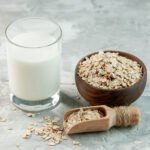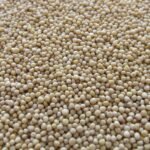Well, howdy there, health enthusiasts! Today, we’re taking a deep dive into the magical world of oats. Bet you never thought you’d be thrilled about such a commonplace cereal grain, huh? Let’s just say, there’s a lot more to oats than meets the eye.
So, saddle up and let’s embark on a journey through the history, versatility, and splendid health benefits of oats. We promise you, by the time you’re through, you’ll be rushing to the nearest store to load up on these nutritional powerhouses!
A Brief Stint with History: Where Do Oats Come From?
Ever wondered about the roots of our dear friend, the oat? Well, you’re in luck! We’re serving up the backstory, hot and ready.
Historically, oats have their roots (pun totally intended) in the Fertile Crescent, a region in the Middle East renowned as the cradle of agriculture. This unassuming grain has been nourishing humanity for thousands of years, dating back to Bronze Age Europe. Now, ain’t that something?
Oat-erly Delicious: The Many Forms of Oats
It’s not just oatmeal anymore, folks. These little grains come in a dizzying array of forms. You’d be surprised at how versatile they can be!

Here are a few types you might come across in your culinary adventures:
- Whole Oat Groats: These are oats in their most natural state, minus the hard unedible husk.
- Steel Cut Oats: Whole oat groats that have chopped into pieces but not rolled. They have a chewy texture and a nutty flavor.
- Rolled Oats: Also known as old-fashioned oats, these are whole oat groats that have steamed and rolled flat.
- Quick Oats: These are rolled oats that have been chopped into smaller pieces to cook faster.
- Instant Oats: These are the most processed form of oats. They’re pre-cooked, dried, rolled, and then pressed slightly thinner than rolled oats. They cook very quickly but lose some texture and flavor in the process.
The Nutritional Breakdown: What’s in an Oat?
Now, hold on to your hats! We’re about to reveal why oats are the nutritional rockstars of the grain world.
Here’s a handy table summarizing the nutritional profile of 100 grams of raw oats:
| Nutrient | Amount |
|---|---|
| Calories | 389 kcal |
| Protein | 16.9 g |
| Fat | 6.9 g |
| Carbohydrates | 66.3 g |
| Fiber | 10.6 g |
Reaping the Benefits: Why Should You Eat Oats?
Enough about what’s in oats. Let’s get down to the nitty-gritty: what do they do for you?
Well, let’s just say oats aren’t hailed as a superfood for nothing:
- Oats are packed with dietary fiber, particularly a type called beta-glucan, which has been shown to lower cholesterol levels.
- They’re a fantastic source of antioxidants, including avenanthramides, which are believed to have heart-protective effects.
- Oats have a low glycemic index, which means they can help control blood sugar levels.
- They’re naturally gluten-free (just watch out for cross-contamination if you’re gluten-sensitive).
Frequently Asked Queries
Now, for the cherry on top, we’re answering your burning questions about oats.
Are all types of oats equally healthy?
Generally speaking, all oats are healthy. However, the less processed the oats are (like steel-cut or whole groat), the more fiber they retain. So, for maximum benefits, aim for less processed versions when you can.
Are oats suitable for a gluten-free diet?
While, oats are naturally gluten-free, they may be processed in facilities that also process wheat, leading to cross-contamination. So, if you’re sensitive to gluten, make sure to choose oats that are certified gluten-free.
A Final Serving
So, folks, there you have it – everything you need to know about the humble, yet mighty oat. Not so boring after all, right?
From their rich history to their versatile forms and fantastic health benefits, oats are truly a nutritional powerhouse. So, why not whip up a bowl of oatmeal for breakfast tomorrow? Your body will thank you!
Source: USDA National Nutrient Database




